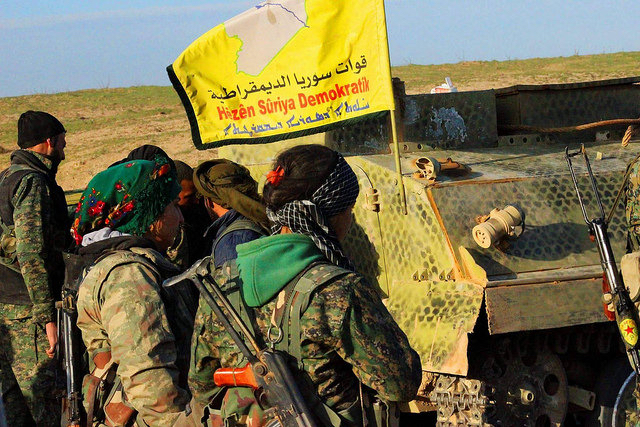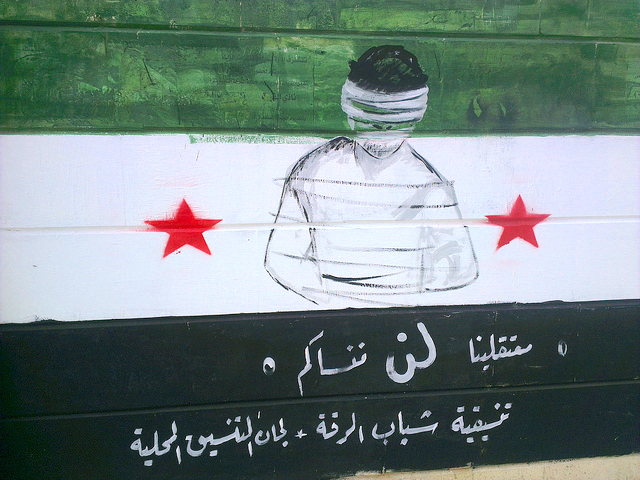Homs, Syria – Akram al-Khoule and his 7-year-old son hold hands as they stare at the once familiar primary school building, now demolished, looted of its contents and stripped of its identifying markers.
“This is where my children studied,” al-Khoule says in a melancholy voice.
Al-Khoule returned to the Homs district of al-Khalidiye this year, after being internally displaced to the coastal city of Tartous for six years. He is one of 600,000 Syrian refugees and internally displaced people who are estimated to have returned to their hometowns this year – many of whom now face a barrage of problems trying to resettle in a place that war has made vastly different.
After he left al-Khalidiye, Syrian rebels and government forces fought intense battles there, turning it and part of Homs Old City into a pile of debris. Pro-government forces reclaimed al-Khalidiye in July 2013, and by May 2014 nearly all of Homs was under regime control. However, more than three years later, little has been done to help civilians whose homes have been destroyed by the fighting.
“We need to conduct proper studies to assess what is needed. That has not been done yet,” Mohammad Samer al-Khalil, Syria’s minister of economy and foreign trade told Syria Deeply.
Al-Khoule is relying on his savings to rebuild his house brick by brick without any assistance from the government. His job at the Syrian Red Crescent enabled him to get a water tank installed, but there is still no electricity. There is no school for his son to attend in the vicinity and no provision for healthcare, he says, pointing to the charred remains of a hospital near his house. It could come crashing down any second.
“There used to be a bakery on that street, but it is all buried now,” al-Khoule says.
The lack of public services is tough to live with, but he is still happy to be back home. However, for many others, having to rebuild homes and infrastructure is just one reason why returning isn’t a viable option.
Take 19-year-old Ayah Kaslan, for example. Now living in Rome, she left Damascus when she was 13 and says her priority is making a career in the West.
“I will start going to college soon,” she says, the excitement clear in her voice. Her future lies with Europe, she thinks. “I can’t return to Syria, because where will I study or what will I do?”
If she returned, she would be unlikely to get a proper higher education and job in Syria, where around 6.1 million Syrians are neither working nor in any form of school or training, according to the World Bank. Worse still, unemployment among young people reached 78 percent in 2015, and six out of every 10 Syrians now live in extreme poverty because of the war.
Beyond the absence of physical, social and economic infrastructure, some fear for their safety should they return.
Moonis Bukhari, a Syrian photographer who moved to Berlin, has a lingering fear of what the government might do to those who stood against it. Bukhari, who became an activist in Germany and spends a lot of time with other Syrian refugees, claims that for many, the idea of packing their bags seems life-threatening.
Bukhari has reason to believe returning may not be safe. His uncle was a supporter of the Communist Action Party during Hafez al-Assad’s brutal crackdown on the group in 1976.
“My uncle was an activist,” he said. “He tried to return from Libya in the early 2000s, but he was arrested at the airport.”
In cities where the government has struck reconciliation deals with opposition-run local councils, the current Assad regime has promised to pardon those who previously opposed its rule and agree to give up their weapons.
“The regime offers reconciliation but goes back on its word, so a lot of people are scared to leave the refugee shelters that they consider safe,” he said.
In August this year, President Bashar al-Assad said in a speech that Syria had “lost its best youth and its infrastructure,” but “won a healthier and more homogenous society.”
For some refugees, like Samar Halbone and her family, who have lived in a refugee camp in the city of Tripoli in northern Lebanon since 2014, the president’s own statements are a deterrent to returning. “We were hounded out because we are Sunnis,” she said, with tears in her eyes.
Halbone and her family are from al-Qusayr in Homs province, which was captured by the Lebanese Shiite group Hezbollah in 2013. It has reportedly established a base in Qusayr and held public parades there.
Her eldest son Mohammad works as a plumber in Tripoli and makes less than $50 a week. He is visibly angry when he asks, “if Qusayr is liberated, why are we holed up here and why is Hezbollah on our land?”
While much of this conversation has so far focused on reconstruction, al-Khoule says it may be a long time before that happens. He worries that the unseen wounds inflicted on the social fabric of the society will be harder to mend, as he knows firsthand the daunting challenges that await.
“It is like rebirth, a new beginning,” he says. “Will my neighbors ever return? I don’t know.”
As an increasing number of former opposition areas come under regime control, the international community and host countries have opened the discussion of returns for the estimated 65 percent of Syria’s population that has been displaced because of the war.
This article originally appeared on Syria Deeply. You can find the original here. For important news about the war in Syria, you can sign up to the Syria Deeply email list. Photograph courtesy of Victor Sukhorukov. Published under a Creative Commons license.





